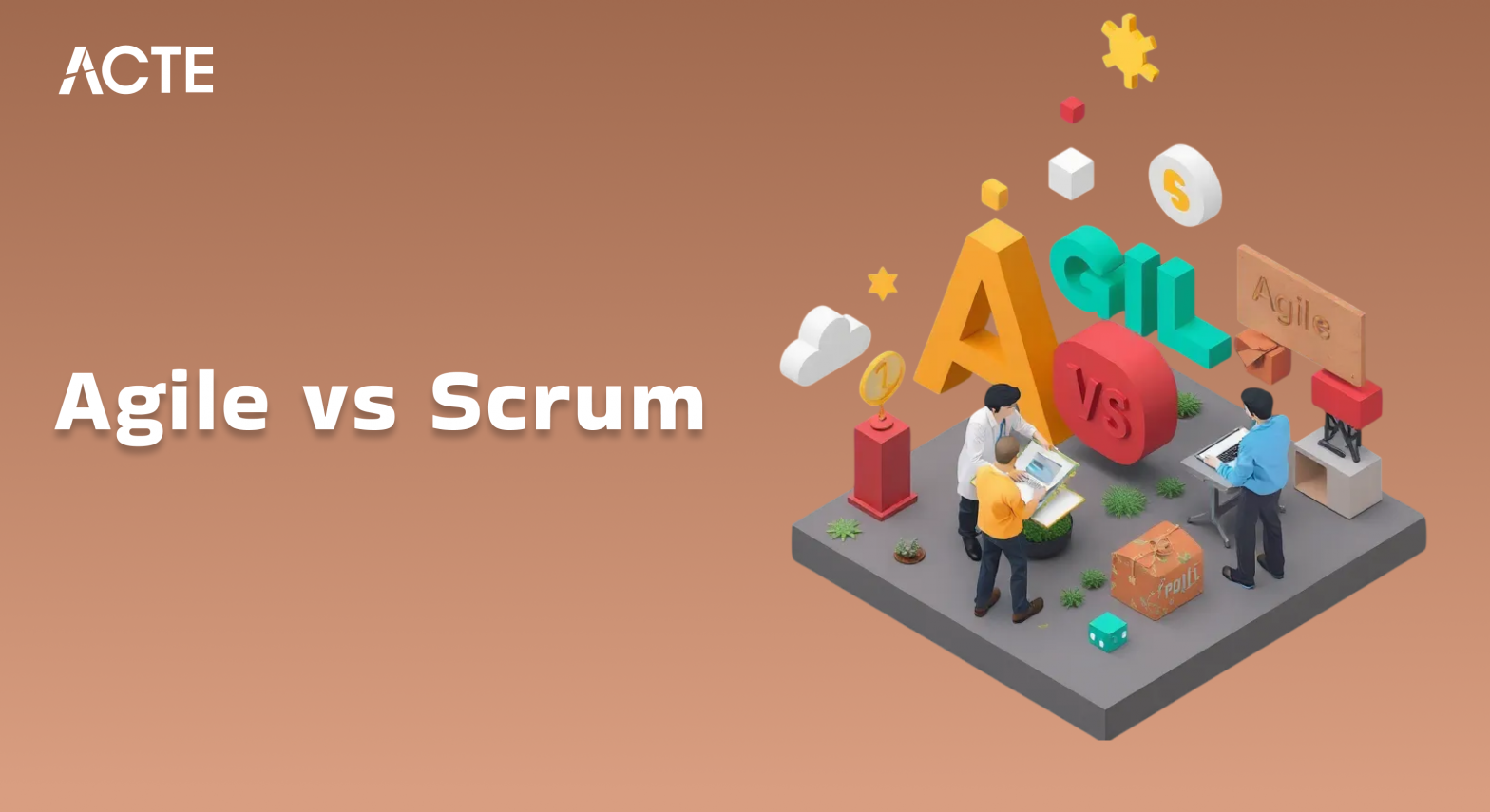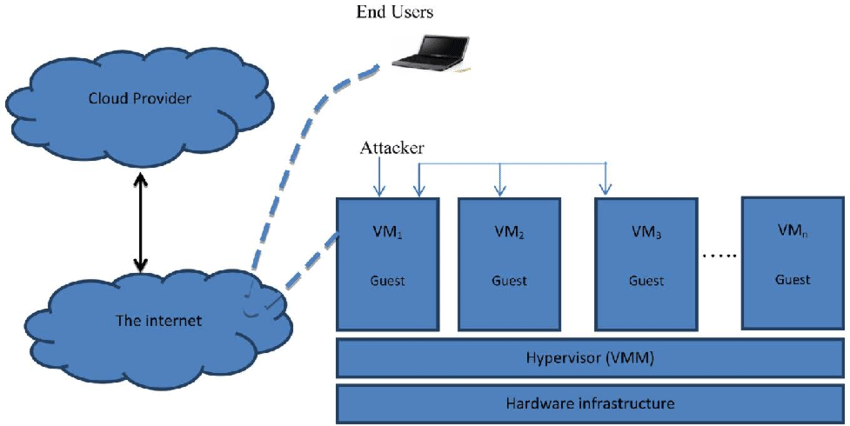
- Introduction to Agile vs Scrum
- DevOps Engineer vs Cloud Engineer
- DevOps Automation Tools
- DevOps Projects
- DevOps Engineer Resume
- What is Cloud Migration?
- Hypervisor in Cloud Computing
- Conclusion
Introduction to Agile vs Scrum
Agile and Scrum are two closely related but distinct methodologies used in software development and project management. Agile is a broad philosophy that promotes flexibility, iterative development, collaboration, and customer feedback to deliver high-quality products efficiently. It encompasses various frameworks, including Scrum, Kanban, and Lean. Scrum, on the other hand, is a specific Agile framework that provides a structured approach to project execution with defined roles, time-boxed iterations (sprints), and continuous improvement. While Agile offers overarching principles, Scrum provides a concrete methodology for implementing Agile effectively. Organizations benefit from Agile’s adaptability, while Scrum ensures accountability and structured progress. Understanding the differences between Agile Scrum Master Certification Training helps organizations choose the right approach for their development needs, enabling them to improve productivity, enhance team collaboration, and deliver value-driven results efficiently in a dynamic business environment.
DevOps Engineer vs Cloud Engineer
The roles of a DevOps Engineer and a Cloud Engineer are closely related but distinct, with each focusing on different aspects of an organization’s IT infrastructure. A DevOps engineer is responsible for bridging the gap between development and operations teams. The role centers around automating and streamlining the software development lifecycle (SDLC) to enable faster and more efficient releases. DevOps engineers focus on building CI/CD pipelines, automating testing, monitoring, and deploying software. Scrum vs Kanban work extensively with tools such as Jenkins, Git, and Docker to ensure smooth collaboration between developers and IT operations. Building and managing CI/CD pipelines,Automating the software release process,Ensuring infrastructure as code (IaC) is properly implemented,Collaborating with development, testing, and operations teams,Monitoring and maintaining software systems.

A cloud engineer focuses on designing, implementing, and managing cloud infrastructure. They work with cloud service providers like AWS, Azure, and Google Cloud to set up and optimize cloud environments. Cloud engineers handle tasks such as provisioning virtual machines, configuring networks, and managing cloud security. They ensure that cloud infrastructure meets performance, scalability, and security requirements. Designing and managing cloud architecture,Provisioning and managing cloud resources,Implementing cloud security practices,Monitoring Sprint Planning ,Ensuring cloud scalability and cost-efficiency. While DevOps engineers focus on automation and improving the development pipeline, cloud engineers focus on building, managing, and optimizing the cloud infrastructure that supports those processes.
Learn the fundamentals of Project Management with this PMP Online Course .
DevOps Automation Tools
Automation is at the heart of DevOps, and several tools are used to facilitate the automation of different tasks in the software development lifecycle. Here are some popular DevOps automation tools:
- Jenkins: A widely used open-source automation server for building, testing, and deploying code. Jenkins integrates with a range of other tools and supports continuous integration and delivery (CI/CD).
- Docker: A tool designed to automate the deployment of applications inside lightweight containers. Docker allows for easy replication of environments, enabling better portability and scalability across different machines and cloud platforms.
- Kubernetes: An open-source platform used to manage containerized applications across clusters of machines. Project Management Consultant provides mechanisms for deploying, maintaining, and scaling applications in containers.
- Ansible: A configuration management tool used to automate infrastructure tasks, such as software installation and server configuration. Ansible is agentless and uses YAML to define automation tasks.
- Puppet: A configuration management tool that allows IT teams to automate the deployment and configuration of servers and software across large infrastructures.
- Terraform: An open-source IaC tool that allows users to define and provision cloud infrastructure using declarative configuration files. It is compatible with most major cloud providers, including AWS, Google Cloud, and Azure.
- Chef: Similar to Puppet, Chef is an automation tool that helps in managing infrastructure, allowing users to define infrastructure as code and automate processes for scaling and managing cloud resources.
- CI/CD tools (Jenkins, GitLab)
- Configuration management tools (Ansible, Puppet, Chef)
- Containerization tools (Docker, Kubernetes)
- Cloud platforms (AWS, Azure, GCP)
- Programming and scripting languages (Python, Shell, Ruby)
- Monitoring tools (Prometheus, Grafana)
- Implementing automated CI/CD pipelines
- Managing cloud infrastructure and deployments
- Improving infrastructure scalability and reliability through automation
- Working on containerization projects and managing containerized applications
- AWS Certified DevOps Engineer
- Docker Certified Associate
- Google Professional DevOps Engineer
- Certified Kubernetes Administrator (CKA)
- Type 1 Hypervisor (Bare-metal): A type 1 hypervisor runs directly on the physical hardware, providing better performance and greater efficiency. Examples of type 1 hypervisors include VMware vSphere, Microsoft Hyper-V, and Xen.
- Type 2 Hypervisor (Hosted): A type 2 hypervisor runs on top of an existing operating system and is typically used for smaller-scale virtualization. Examples include VMware Workstation and VirtualBox.
- Isolation: Hypervisors ensure that virtual machines run independently without interfering with each other.
- Resource Management: Hypervisors allocate CPU, memory, and storage to each VM based on demand.
- Performance Monitoring: Hypervisors monitor the performance of VMs and can dynamically allocate resources based on current usage.
- Security: Hypervisors help in maintaining security by isolating VMs from each other and preventing cross-contamination of data.
Dive into Project Management by enrolling in this PMP Certification Training today.
DevOps Projects
DevOps projects focus on implementing DevOps principles in real-world environments by integrating development and operations, automating workflows, and leveraging tools for continuous integration, delivery, and monitoring. Examples of such projects include setting up a fully automated CI/CD pipeline using tools like Jenkins or GitLab CI to ensure seamless code building, testing, and deployment. Infrastructure as Code (IaC) implementation using Terraform or Ansible enables automated provisioning and management of infrastructure, eliminating manual errors. Containerization with Docker and Kubernetes involves migrating applications into containers for enhanced portability and scalability. Monitoring and logging setups using Prometheus, Grafana, and the Agile Scrum Master Certification Training (Elasticsearch, Logstash, Kibana) help track application performance and logs throughout the CI/CD pipeline and production environment. Automated testing integration with tools like Selenium, JUnit, or TestNG ensures continuous testing at each development stage before deployment. Additionally, version control integration using Git with Jenkins or GitLab streamlines version tracking and deployment automation. These projects help DevOps teams enhance development workflows, improve application performance, and minimize manual interventions.
DevOps Engineer Resume
A DevOps Engineer resume needs to reflect both technical proficiency and an understanding of automation, software development, and system administration. Here are key sections to include in a DevOps engineer resume:
Professional Summary: A concise introduction highlighting your expertise in automation, CI/CD, containerization, cloud services, and Developing Project Schedule.
Skills: List of technical skills relevant to the role, including:
Experience: Detailed work experience focusing on key achievements, such as:
Take charge of your PMP career by enrolling in ACTE’s PMP Master Program Training Course today!
Projects: Highlight any relevant DevOps projects you’ve worked on, including those involving automation, containerization, or cloud infrastructure.
Education: Include your degree(s), certifications, and any relevant training in DevOps, cloud computing, or system administration.
Certifications: Popular certifications include:
By tailoring the resume to showcase both practical experience and Cost of Quality in Project Management , you’ll make yourself an attractive candidate for DevOps roles.
What is Cloud Migration?
Cloud migration is the process of transferring data, applications, and other business elements from on-premises infrastructure to cloud-based platforms such as AWS, Azure, or Google Cloud. Agile Prioritization Techniques is essential for organizations looking to leverage the benefits of cloud computing, including scalability, cost efficiency, and flexibility. There are several types of cloud migration: Rehosting, also known as “lift and shift,” involves moving applications to the cloud without significant changes, making it the fastest but least cloud-optimized method. Replatforming requires some optimizations to better utilize cloud platforms while maintaining the overall application structure, such as transitioning to AWS EC2 or Azure Virtual Machines. Refactoring involves redesigning applications to take full advantage of cloud-native features, ensuring better scalability and performance but requiring a more complex migration process. The cloud migration process typically involves several key steps. Assessment and planning help organizations determine what needs to be migrated, assess downtime tolerance, and choose the right cloud provider. Migration execution involves transferring data and applications while addressing dependencies to ensure seamless functionality. Testing and optimization ensure that the migrated systems work as expected, with a focus on performance, security, and cost efficiency. Cloud migration ultimately enables businesses to scale operations, enhance collaboration, and reduce infrastructure costs, making it a crucial step in digital transformation.
Want to ace your Project Management interview? Read our blog on Project Management Interview Questions and Answers now!
Hypervisor in Cloud Computing
A hypervisor is a software layer that allows multiple virtual machines (VMs) to run on a single physical machine by providing the necessary resources (CPU, memory, and storage). Hypervisors are essential in Retrospection Needed, a key technology in cloud computing, which enables organizations to run multiple workloads on shared hardware without interfering with each other.
There are two main types of hypervisors:
In cloud computing, hypervisors allow Time Management Tools you Should Know to create isolated environments (VMs) on shared infrastructure. Cloud service providers, such as AWS and Azure, use hypervisors to enable multi-tenancy and maximize resource utilization. The use of hypervisors ensures that each customer’s data and applications remain isolated and secure, even though they may share the same physical resources.
Key functions of hypervisors in cloud computing:Conclusion
Agile and Scrum are both powerful methodologies that enhance software development and project management by promoting flexibility, collaboration, and continuous improvement. While Agile is a broad framework emphasizing iterative progress and adaptability, Scrum is a specific implementation of Agile that provides structured roles, events, and artifacts to streamline project execution. Organizations adopting Agile benefit from responsiveness to change, while Scrum offers a disciplined approach to achieving goals efficiently. Understanding their differences helps teams choose the right methodology based on project needs. Ultimately, both Agile Scrum Master Certification Training drive innovation, improve product quality, and foster a collaborative work environment for successful project delivery. By embracing these methodologies, teams can enhance productivity, reduce risks, and respond quickly to market demands. Agile’s adaptability ensures long-term sustainability, while Scrum’s structured approach enables faster results. Whether an organization chooses Agile, Scrum, or a combination of both, adopting these principles leads to continuous learning, better stakeholder engagement, and overall business success in an evolving digital landscape.





